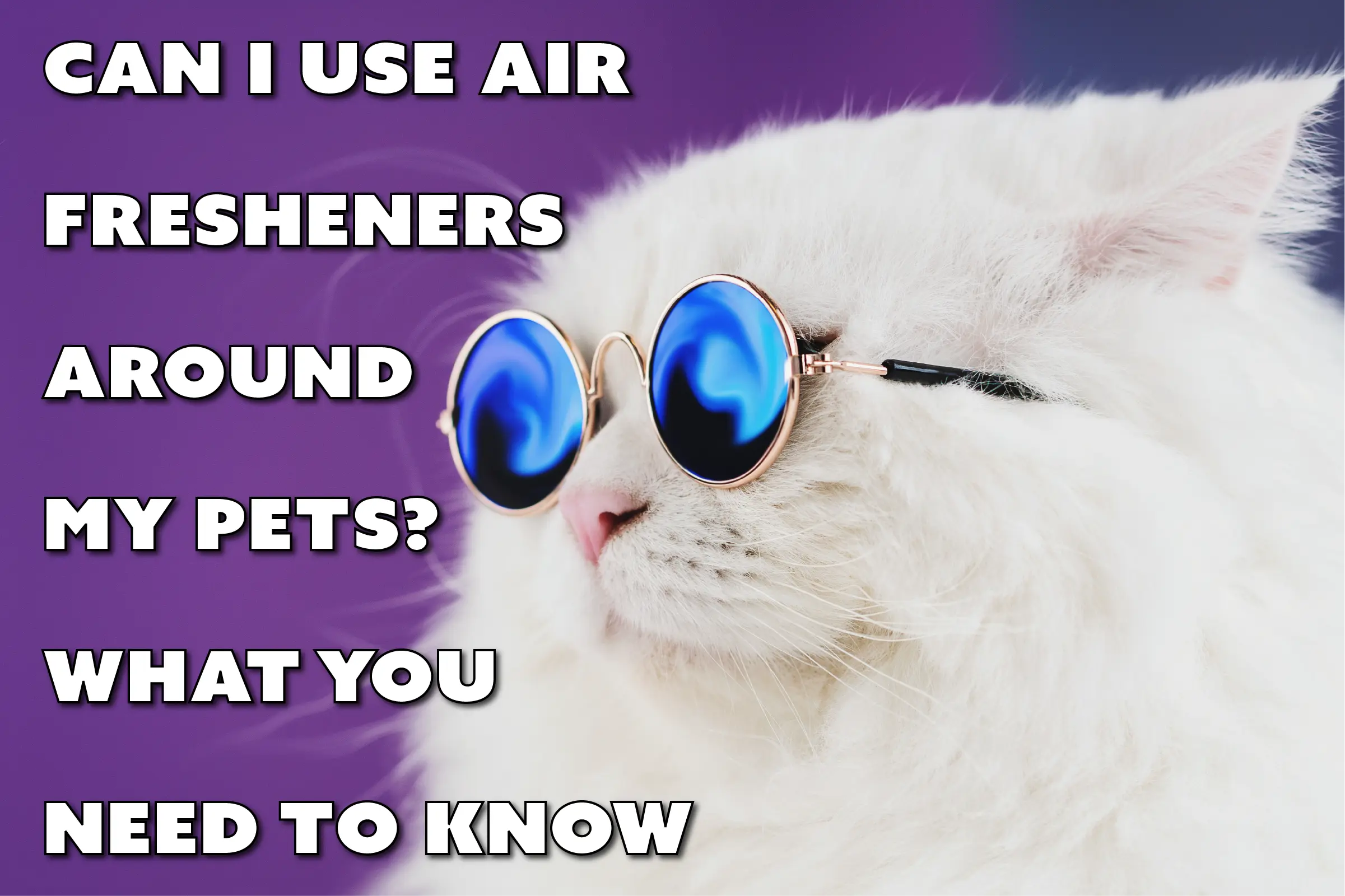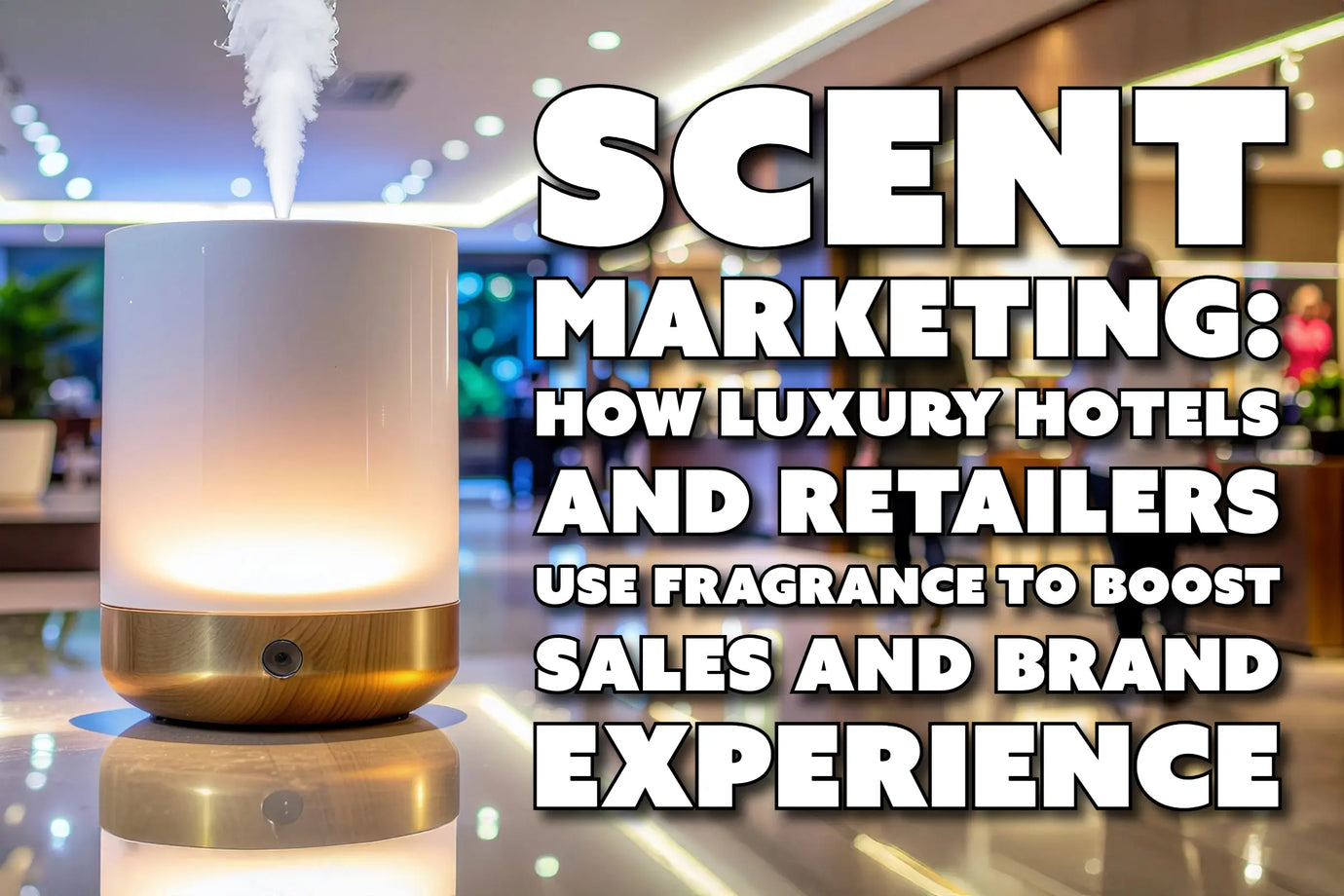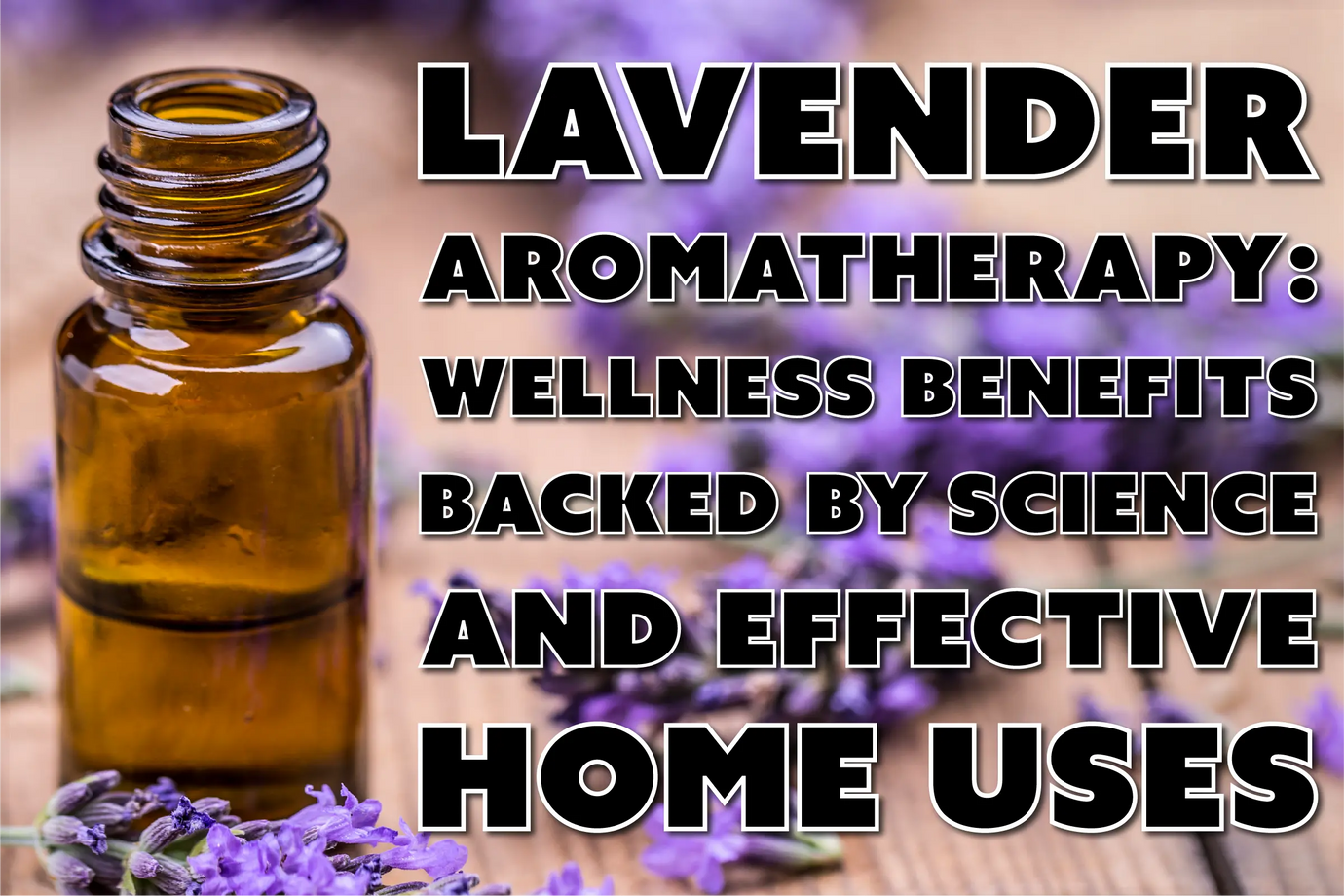Can I Use Air Fresheners Around My Pets? Here’s What You Need to Know (Science-Backed)
What this blog covers (quick skim)
- How scents and aerosols interact with indoor air and why that matters for pets [1], [5].
- Why cats are uniquely sensitive to certain essential oils (hello, metabolism differences) [3].
- Why birds are extra vulnerable to airborne chemicals and aerosols [4].
- Safer ways to use sprays, incense, water-based ultrasonic diffusers, and waterless ultrasonic diffusers (pure oil nebulizers).
- Clear “avoid/okay” ingredient guidance and step-by-step usage tips.
- References to peer-reviewed or authoritative sources.
Can I use air fresheners around pets?
Short answer: Yes, but with care. Certain fragrance products (and even “natural” essential oils) can emit volatile organic compounds (VOCs) and secondary reaction products that affect indoor air quality and negatively impact sensitive pets [1], [5]. The keys to safe use are: ingredient choice, dose, placement, ventilation, and monitoring.
Pro tip: When in doubt, keep it light, ventilated, and out of reach, and avoid direct skin contact or ingestion.
Why indoor air chemistry matters (yes, even for “natural” scents)
Pets are closer to the floor, where scent particles tend to settle. They also groom themselves (ingestion risk), and, especially in the case of cats and birds, may be more susceptible to irritation by certain airborne compounds. As such, the formula and dispersal method you choose play a vital role in ensuring a pet-safe scent routine.
Unless they’re formulated correctly, scented products, including sprays, candles, & diffusers, can release VOCs like terpenes (e.g., limonene, pinene). These can react with indoor ozone to form secondary pollutants, including formaldehyde, and fine irritant particles [1], [5]. Controlled studies have documented emissions and secondary organic aerosol formation from cleaning products and air fresheners, underscoring that “more scent” isn’t necessarily better [5]. As such, moderation and ventilation are essential to a pet-safe scent experience.
What this means for you as a pet-parent:
- Air Freshener & Odor Eliminator Sprays: Choose VOC-free, non-aerosol brands like BluntPower or Fast & Furious. Start with one or two short bursts, spaced decently far apart and far enough away from your pet to prevent overspray from getting on their fur. Keep the space well-ventilated and monitor your pet’s behavior.
- Diffusers: Whether you’re going water-based or waterless, start on the lowest output setting and work up from there. Again, maintain good airflow in the space and monitor your pet’s behavior. Never shut your pet in a room with a diffuser running.
Why cats and birds deserve extra caution
Cats: Felines have well-documented limitations in certain liver glucuronidation pathways, which can make them less efficient at metabolizing some essential oil constituents (phenols and some terpenes). Clinical case reports and toxicology texts flag oils like tea tree (melaleuca), eucalyptus, clove, cinnamon, wintergreen (methyl salicylate), and pine as higher risk for cats, especially when undiluted or ingested [3].
Birds: Avian lungs are highly efficient with a unique air sac system, which can increase sensitivity to airborne irritants and aerosols. Even mild exposures that humans tolerate can stress birds [4]. As such, we do not recommend using air fresheners, diffusers, candles, or other scented air care products around birds.
Diffusers 101: Water-Based vs. Waterless (Pure-Oil) Models
Water-based ultrasonic diffusers (mist from water + a few drops of oil)
Pros: Gentle scent, humidifying effect, easy to dilute, common, and affordable.
Cons: Over-scenting is easy if you add too many drops; water reservoirs need regular cleaning to prevent buildup.
Pet-safe tips:
- Use a few drops (think 1–3 drops per 100 mL water to start).
- Run intermittently (15–30 minutes on, then off).
- Keep the unit out of reach & never confine pets in a small room with the diffuser running.
- Ventilate and watch for any signs of irritation (squinting, drooling, coughing, hiding).
Waterless ultrasonic (aka nebulizing/pure oil) diffusers
Pros: No water, stronger and purer aroma output, programmable timers, minimal residue; great for large or open spaces.
Cons: Because output is more concentrated, start low and test tolerance.
Pet-safe tips:
- Choose pet-considered oils like Urban Encounter Scents for Diffusers. Avoid strong phenolic oils (see list below).
- Use lowest intensity and short cycles first (e.g., 5–10 minutes on, 30–60 minutes off).
- Place high on a shelf, away from pet beds, tanks, or cages, and ensure good airflow.
- Never apply oils directly to pets or allow access to pure oil bottles.
If you’re implementing scenting in a home or boutique setting, consider a commercial-grade, waterless diffuser for consistent, low-maintenance performance and lowering the output for pet-safe use. Browse our Scent Diffuser Collection for options that run on pure essential oils or fragrance oils with programmable controls.
Sprays, incense, and odor eliminators—what’s safest?
- Air freshener & odor eliminator sprays: Choose non-aerosol, low-VOC formulas like BluntPower or Fast & Furious. Use short bursts and ventilate. Avoid continuous, heavy use, especially around cats. Avoid using scent sprays around birds.
- Other Odor Elimination Methods: Enzymatic and adsorbent-based (e.g., charcoal) solutions target malodor sources rather than masking; these are typically lower risk when used as directed.
- Incense: Pleasant but smoky, which is not ideal for pets with respiratory sensitivity. Use occasionally, ventilate the space, and keep the burning stick out of reach of pets.
- Linen sprays: Great for quick refreshes away from pets. Just be sure to allow the mist to settle before pets reenter the space.
Ingredients: what to avoid vs. what’s commonly better tolerated
Every pet is unique, but veterinary toxicology sources and poison control centers commonly flag these as higher-risk for cats (especially when undiluted or accidentally ingested):
- Tea tree (melaleuca), eucalyptus, clove, cinnamon, wintergreen (methyl salicylate), pine [3]
Often better tolerated (in very low airborne concentrations) for many households (still avoid direct contact/ingestion, and avoid use around birds):
- Lavender (lavandula), vanilla, chamomile, frankincense, cedarwood (Virginia), and certain clean citrus blends formulated with low irritancy.
Note: Some cats are citrus-averse; if used, keep the intensity low and watch behavior.
If you notice drooling, ataxia (wobbliness), vomiting, lethargy, wheezing, or eye irritation, stop immediately, ventilate the space, and contact your veterinarian or a poison control line immediately.
Step-by-step: a pet-safe scent routine
- Pick the right area. Scent common spaces with escape routes (never closed rooms with pets inside).
- Start ultralow. When using a diffuser, begin at the lowest intensity and shortest duration. For room sprays, start with a short burst or two spaced decently far apart.
- Watch your pets. If they leave the room, hide, sneeze, or act off, dial back or discontinue.
- Prioritize ventilation. Open a window or run your HVAC system for easy dilution.
- Store smart. Keep oils and sprays capped, upright, and out of reach. Clean spills immediately.
- Maintain devices. Wipe waterless diffuser nozzles; clean water tanks regularly per manufacturer guidance.
- Separate grooming from fragrance. Pet deodorizing sprays (if used) should be pet-specific, applied away from eyes/nose/mouth, and never as a substitute for bathing or veterinary care.
FAQs
Is it safe to diffuse essential oils with cats in the home?
It can be safe with caution: choose milder oils, use very low output, ventilate, and never trap your cat in the room. Avoid phenolic and high-salicylate oils; monitor closely [3].
Are waterless (pure-oil) diffusers riskier than water-based?
They’re more concentrated per minute, but that doesn’t make them inherently unsafe. You should use the lowest settings, short cycles, and maintain good airflow, especially around cats.
Are blended fragrance oils okay, or should I stick to pure essential oils?
Depending on the formula, either can emit VOCs. The dose and delivery matter most: use low intensity, verify quality, and monitor pets. If your pet has asthma or respiratory disease, consult your vet first [1], [3]. When in doubt, stick with VOC-free, pet-friendly brands like those offered on MasterCreationsInc.com.
Can I spray fabric freshener on pet bedding?
Generally, avoid spraying products directly on items your pet sleeps on or chews. Scent the room air instead, let it settle, then allow pets back.
Conclusion
You don’t have to choose between a fresh home and a pet-safe home. With smart product choices, a light touch, and good ventilation, you can enjoy air fresheners and diffusers while keeping your pets comfortable. Start low, go slow, and let your pets’ behavior guide you. When you’re ready to upgrade your setup, explore our Scent Diffuser Collection for waterless options with programmable controls, and keep BluntPower handy for quick, human-zone resets.
References (peer-reviewed & authoritative)
- U.S. EPA. Volatile Organic Compounds’ Impact on Indoor Air Quality. https://www.epa.gov/indoor-air-quality-iaq/volatile-organic-compounds-impact-indoor-air-quality
- Pet Poison Helpline. Essential Oils and Dogs. https://www.petpoisonhelpline.com/pet-safety-tips/essential-oils-dogs/
- Pet Poison Helpline. Essential Oils and Cats. https://www.petpoisonhelpline.com/blog/essential-oils-cats/
- Richardson, J. A., Murphy, L. A., Khan, S. A., & Means, C. (2001, March). Managing pet bird toxicoses. Exotic DVM, 3(1), 23–27. https://aspcapro.org/sites/default/files/apcc_birdtoxic.pdf
- Singer, B. C., Destaillats, H., Hodgson, A. T., & Nazaroff, W. W. (2006). Cleaning products and air fresheners: Emissions and secondary organic aerosol formation. Indoor Air, 16(3), 179–191. https://onlinelibrary.wiley.com/doi/10.1111/j.1600-0668.2005.00414.x
- NCCIH (NIH). Aromatherapy: What You Need To Know. https://www.nccih.nih.gov/health/aromatherapy








